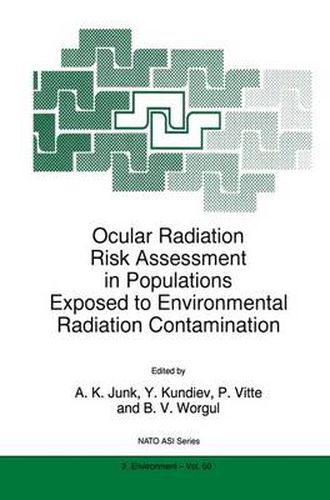Readings Newsletter
Become a Readings Member to make your shopping experience even easier.
Sign in or sign up for free!
You’re not far away from qualifying for FREE standard shipping within Australia
You’ve qualified for FREE standard shipping within Australia
The cart is loading…






This title is printed to order. This book may have been self-published. If so, we cannot guarantee the quality of the content. In the main most books will have gone through the editing process however some may not. We therefore suggest that you be aware of this before ordering this book. If in doubt check either the author or publisher’s details as we are unable to accept any returns unless they are faulty. Please contact us if you have any questions.
Several major follow-up studies are currently underway or are being planned to assess populations exposed to radiation from nuclear reactor accidents, contamination from nuclear weapons manufacturing, or fallout from nuclear testing. The data should help to define the true extent of the impact of environmental contamination; allow a better appreciation of the morbidity arising from such contamination; establish acceptable standards for ocular risk guidelines; develop a necessary database for retrospective dose reconstruction using cataract; and assess the contribution of environmental radiation exposure to the incidence of senile cataract development in general populations. Given the complexity of such studies, the potential confounders and the myriad possible methods of assessment, the global medical and scientific communities need to standardize methodologies and agree on minimum criteria to permit inter-study comparisons. Such standards have been developed in the present book, which presents a series of recommendations that represent the first codification of the manner in which studies should be executed. Minimum standardized criteria are given for the acquisition, archiving, evaluation and dissemination of data on the ocular risk of populations from environmental radiation exposure.
$9.00 standard shipping within Australia
FREE standard shipping within Australia for orders over $100.00
Express & International shipping calculated at checkout
Stock availability can be subject to change without notice. We recommend calling the shop or contacting our online team to check availability of low stock items. Please see our Shopping Online page for more details.
This title is printed to order. This book may have been self-published. If so, we cannot guarantee the quality of the content. In the main most books will have gone through the editing process however some may not. We therefore suggest that you be aware of this before ordering this book. If in doubt check either the author or publisher’s details as we are unable to accept any returns unless they are faulty. Please contact us if you have any questions.
Several major follow-up studies are currently underway or are being planned to assess populations exposed to radiation from nuclear reactor accidents, contamination from nuclear weapons manufacturing, or fallout from nuclear testing. The data should help to define the true extent of the impact of environmental contamination; allow a better appreciation of the morbidity arising from such contamination; establish acceptable standards for ocular risk guidelines; develop a necessary database for retrospective dose reconstruction using cataract; and assess the contribution of environmental radiation exposure to the incidence of senile cataract development in general populations. Given the complexity of such studies, the potential confounders and the myriad possible methods of assessment, the global medical and scientific communities need to standardize methodologies and agree on minimum criteria to permit inter-study comparisons. Such standards have been developed in the present book, which presents a series of recommendations that represent the first codification of the manner in which studies should be executed. Minimum standardized criteria are given for the acquisition, archiving, evaluation and dissemination of data on the ocular risk of populations from environmental radiation exposure.